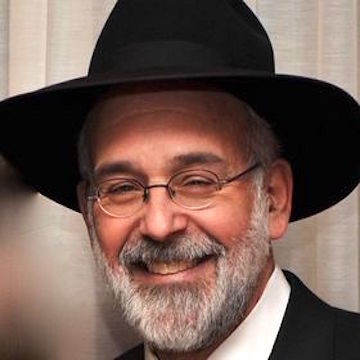Rabbi David Etengoff
336 results total, viewing 171 - 180
|
The Five Books of the Torah contain two instances of the phrase, “vayikra Hashem el Moshe,” “and Hashem called to Moshe.” The first appears in Shemot 24:16, in the context of …
more
By Rabbi David Etengoff
|
3/13/19
|
|
Our parasha contains the final verse of Sefer Shemot: “For the cloud of the L-rd was upon the Mishkan by day, and there was fire within it at night, before the eyes of the entire house of …
more
By Rabbi David Etengoff
|
3/6/19
|
|
Vayakel and Pekudei are narrative Torah portions that describe the creation of the Mishkan and the bigdei kehuna. The word “vayaas” — “and he made” — is used …
more
By Rabbi David Etengoff
|
2/27/19
|
|
The Tanach contains a number of instances when Hashem calls to individuals and repeats their name within the same verse. For example, just before G-d commands Avraham not to offer Yitzchak upon the …
more
By Rabbi David Etengoff
|
2/20/19
|
|
There are two well-known verses in Shemot that express the concept of Hashem’s dwelling among the Jewish people. The first instance appears in last week’s parasha, “And they …
more
Rabbi David Etengoff
|
2/13/19
|
|
Our parasha, Terumah, focuses upon the mitzvah of constructing the Mishkan (portable desert Sanctuary). The verse that conveys this commandment is found early on in our Torah reading: “And …
more
By Rabbi David Etengoff
|
2/5/19
|
|
Our parasha, Mishpatim, contains the ethically-infused mitzvah “mi’devar sheker tirchak” (“Distance yourself from a false matter,” Shemot 23:7).
In his Torah …
more
By Rabbi David Etengoff
|
1/31/19
|
|
The first pasuk of our parasha, Yitro, states, “Now Moshe’ father-in-law, Yitro, the chieftain of Midian, heard all that G-d had done for Moshe and for Israel His …
more
By Rabbi David Etengoff
|
1/22/19
|
|
The concluding section of our parasha, Beshalach, contains the account of our ancestors’ mortal combat with Amalek, the marauding desert tribe that sought to destroy us after our departure from …
more
By Rabbi David Etengoff
|
1/16/19
|
|
On that day, you must tell your child, ‘It is because of this that G-d acted for me when I left Egypt’.” (Shemot 13:8).
This is one of the best known pasukim of both our …
more
By Rabbi David Ettengoff
|
1/10/19
|

 47.0°,
Mostly Cloudy
47.0°,
Mostly Cloudy 